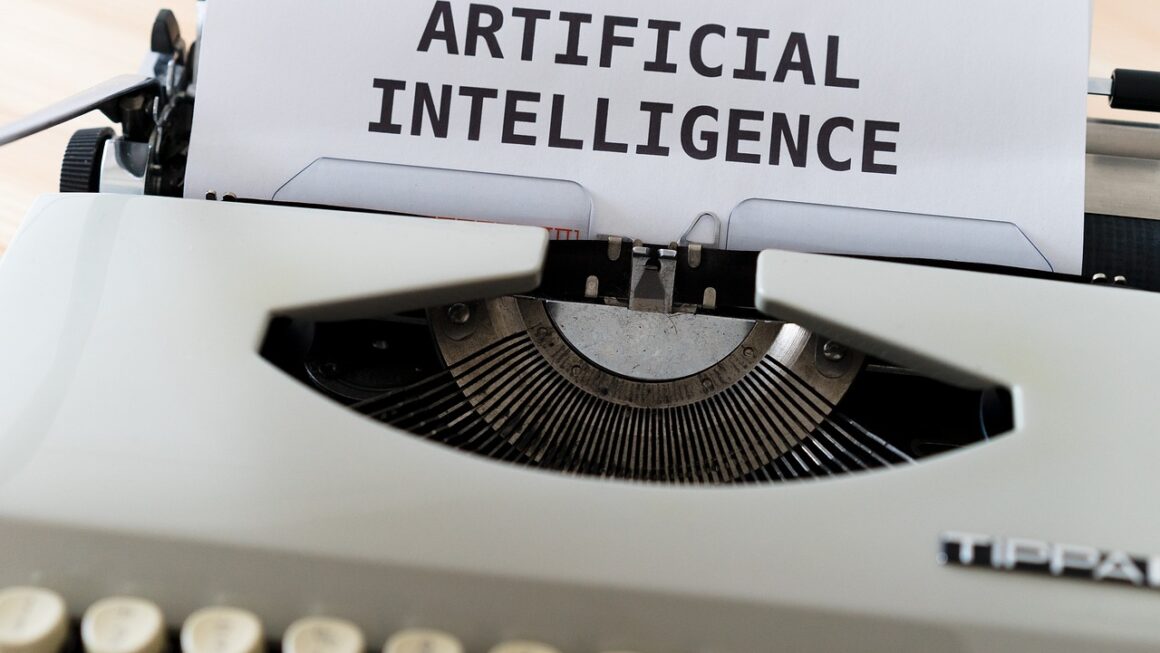Neural networks, inspired by the biological neural networks of the human brain, are revolutionizing numerous fields, from image recognition to natural language processing. These powerful algorithms are at the heart of many modern artificial intelligence applications, enabling machines to learn, adapt, and make decisions with remarkable accuracy. This blog post delves into the core concepts of neural networks, exploring their structure, functionality, and diverse applications in the modern world.
What are Neural Networks?
The Basic Building Blocks: Neurons
At their core, neural networks are composed of interconnected nodes called neurons (or perceptrons in simpler models). These neurons mimic the behavior of biological neurons, receiving input signals, processing them, and transmitting an output signal.
- Each neuron receives inputs, multiplies them by corresponding weights, and sums them up.
- The sum is then passed through an activation function, which introduces non-linearity. Common activation functions include sigmoid, ReLU (Rectified Linear Unit), and tanh.
- The output of the activation function is the neuron’s output, which is then passed on to other neurons in the network.
Layers of Abstraction
Neural networks are organized into layers:
- Input Layer: Receives the initial data. The number of neurons in this layer corresponds to the number of features in the input data.
- Hidden Layers: Perform the majority of the computation. Deep neural networks have multiple hidden layers, allowing them to learn complex patterns. The number of hidden layers and the number of neurons in each hidden layer are hyperparameters that can be tuned.
- Output Layer: Produces the final result. The number of neurons in this layer depends on the type of problem (e.g., one neuron for binary classification, multiple neurons for multi-class classification).
How Neural Networks Learn: Training Process
Neural networks learn through a process called training, which involves adjusting the weights and biases of the neurons to minimize the difference between the network’s predictions and the actual values.
- Forward Propagation: Input data is fed through the network, and the output is calculated.
- Loss Function: A loss function quantifies the error between the predicted output and the actual output. Common loss functions include mean squared error (MSE) for regression and cross-entropy for classification.
- Backpropagation: The error is propagated backward through the network, and the weights and biases are adjusted using optimization algorithms like gradient descent. Gradient descent iteratively adjusts the weights and biases in the direction that minimizes the loss function.
- Iteration: This process of forward propagation, loss calculation, and backpropagation is repeated over many iterations until the network converges to a solution with minimal error.
Types of Neural Networks
Neural networks come in various architectures, each suited for different types of tasks.
Feedforward Neural Networks (FFNN)
- The simplest type of neural network, where data flows in one direction, from input to output.
- Suitable for tasks like classification and regression when the input data is independent of the order.
- Example: Predicting house prices based on features like size, location, and number of bedrooms.
Convolutional Neural Networks (CNN)
- Designed for processing grid-like data, such as images and videos.
- Use convolutional layers to automatically learn spatial hierarchies of features.
- Example: Image recognition, object detection, and image segmentation. They excel at tasks where spatial relationships in the input data are crucial.
- Statistically, CNNs have led to significant improvements in image recognition accuracy, exceeding human-level performance on some tasks.
Recurrent Neural Networks (RNN)
- Designed for processing sequential data, such as text and time series.
- Have recurrent connections, allowing them to maintain a memory of previous inputs.
- Example: Natural language processing, speech recognition, and machine translation.
- RNNs are particularly useful when the order of the input data is important. A variant, LSTMs (Long Short-Term Memory), mitigates the vanishing gradient problem that affects traditional RNNs.
Generative Adversarial Networks (GAN)
- Consist of two neural networks, a generator and a discriminator, that compete with each other.
- The generator creates new data instances, while the discriminator tries to distinguish between real and generated data.
- Example: Image generation, style transfer, and data augmentation.
- GANs have demonstrated remarkable capabilities in generating realistic images and videos.
Applications of Neural Networks
Neural networks have found applications in a wide range of industries and domains.
Image Recognition and Computer Vision
- Object detection: Identifying and locating objects within an image. Practical example: Self-driving cars using CNNs to detect pedestrians, traffic lights, and other vehicles.
- Image classification: Categorizing images based on their content. Practical Example: Medical imaging, where CNNs assist radiologists in diagnosing diseases by analyzing X-rays or MRIs.
- Facial recognition: Identifying individuals based on their facial features.
Natural Language Processing (NLP)
- Machine translation: Translating text from one language to another. Neural machine translation has significantly improved the fluency and accuracy of translations.
- Sentiment analysis: Determining the emotional tone of a piece of text. Useful for businesses to gauge customer feedback and monitor brand reputation.
- Chatbots: Developing conversational agents that can interact with humans.
Finance
- Fraud detection: Identifying fraudulent transactions. Neural networks can analyze transaction patterns and identify anomalies that might indicate fraudulent activity.
- Algorithmic trading: Developing automated trading strategies.
- Credit risk assessment: Evaluating the creditworthiness of loan applicants.
Healthcare
- Drug discovery: Identifying potential drug candidates.
- Personalized medicine: Developing treatment plans tailored to individual patients.
- Disease diagnosis: Assisting doctors in diagnosing diseases.
Challenges and Considerations
While neural networks offer remarkable capabilities, they also present certain challenges.
Data Requirements
- Neural networks typically require large amounts of labeled data to train effectively.
- Insufficient data can lead to overfitting, where the network performs well on the training data but poorly on unseen data.
- Data augmentation techniques can be used to artificially increase the size of the training dataset.
Computational Cost
- Training deep neural networks can be computationally expensive, requiring significant processing power and time.
- GPUs (Graphics Processing Units) are often used to accelerate the training process.
- Cloud computing platforms offer access to powerful hardware resources for training neural networks.
Interpretability
- Neural networks are often considered “black boxes” because it can be difficult to understand how they make their decisions.
- Techniques like feature importance analysis and attention mechanisms can help shed light on the decision-making process.
- Explainable AI (XAI) is an emerging field that aims to develop more interpretable AI models.
Hyperparameter Tuning
- The performance of a neural network is highly dependent on the choice of hyperparameters (e.g., learning rate, number of layers, number of neurons per layer).
- Hyperparameter tuning can be a time-consuming process.
- Techniques like grid search, random search, and Bayesian optimization can be used to automate the hyperparameter tuning process.
Conclusion
Neural networks are a powerful tool for solving complex problems in a wide range of domains. By understanding the fundamental concepts and different architectures of neural networks, you can begin to leverage their potential to create innovative solutions and drive advancements in AI. As the field continues to evolve, exploring new architectures, optimization techniques, and applications will be key to unlocking even greater capabilities. Remember to consider the data requirements, computational cost, and interpretability when developing and deploying neural network models. The future of AI is inextricably linked to the advancement and application of these fascinating algorithms.




